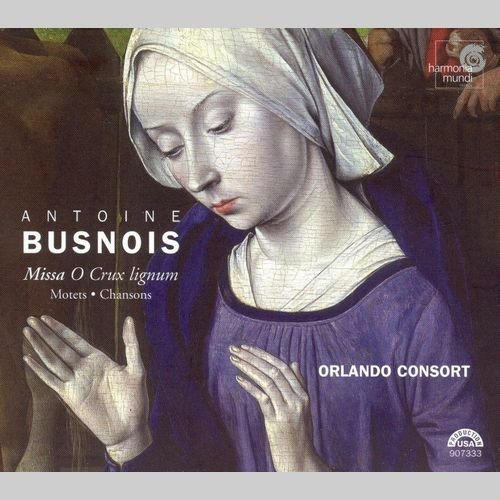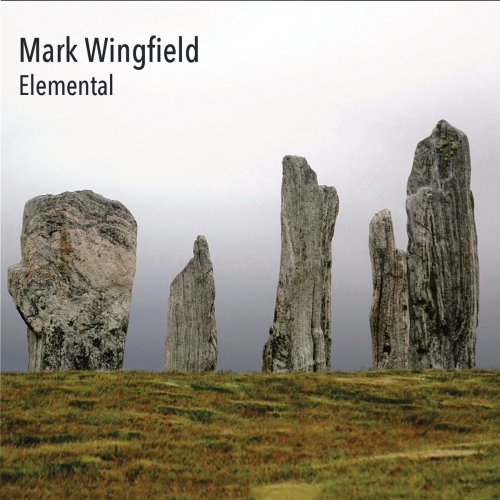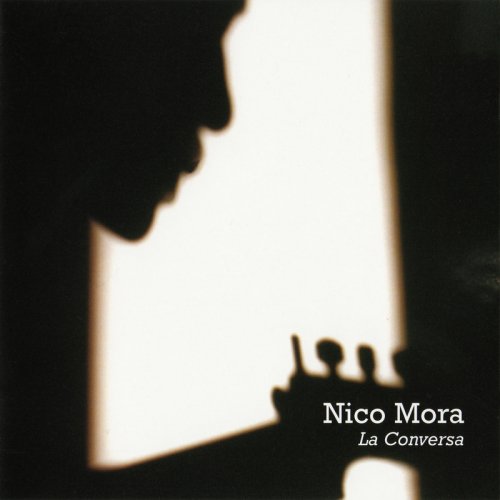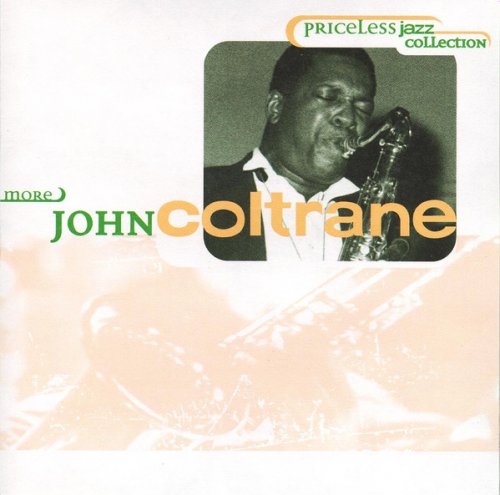Robert Harre-Jones, Mark Dobell, Orlando Consort - Antoine Busnois - Missa O Crux lignum / Motets & Chansons (2005)

Artist: Robert Harre-Jones, Mark Dobell, Orlando Consort
Title: Antoine Busnois - Missa O Crux lignum / Motets & Chansons
Year Of Release: 2005
Label: Harmonia Mundi
Genre: Classical
Quality: FLAC (image+.cue,log,scans)
Total Time: 62:31
Total Size: 315 mb
WebSite: Album Preview
Tracklist: Title: Antoine Busnois - Missa O Crux lignum / Motets & Chansons
Year Of Release: 2005
Label: Harmonia Mundi
Genre: Classical
Quality: FLAC (image+.cue,log,scans)
Total Time: 62:31
Total Size: 315 mb
WebSite: Album Preview
1. Motet: Gaude caelestis Domina 6:15
2. Chanson: A une damme j'ay fait veu 3:25
3. Chanson: Amours nous traitte honnestement / Je m'en voy 1:32
4. Chanson-Motet: Resjois-toy, terre de France / Rex pacificus 2:05
5. Hymn: Conditor alme siderum 3:03
6. Missa O Crux lignum: Kyrie: Kyrie 2:46
7. Gloria: Gloria 6:13
8. Credo: Credo 7:03
9. Sanctus: Sanctus 4:41
10. Benedictus: Benedictus 2:37
11. Agnus Dei: Agnus Dei 5:30
12. Chanson: Ja que li ne s'i attende 3:29
13. Chanson: Vostra beauté / Vous marchez du bout du pié 1:09
14. Chanson: Est-il merchy de quoy on pueut finer? 4:08
15. Motet: Incomprehensibilia / Praeter rerum ordinem 8:35
Performers:
Robert Harre-Jones - coutertenor
Mark Dobell - tenor
Angus Smith - tenor
Donald Greig - baritone
Orlando Consort
England's Orlando Consort, a quartet of male singers augmented as needed by other performers, offers performances of Renaissance vocal music that lie midway between the traditional and the highly individualized modern. Sometimes they veer toward one of those two extremes, but often, as on the present disc, they find a happy medium. Their sound, especially in sacred music, owes much to the English cathedral tradition, but there's a well-honed edge to their one-voice-to-a-part interpretations that brings out the crowds who've recently been drawn to early music. This disc is intended as an introduction to a composer who doesn't always offer easy listening to the modern ear. Netherlander Antoine Busnois, active at the end of the fifteenth century and considered the greatest figure between Dufay and Josquin, wrote music that broke free from elaborate medieval numerology but came in advance of Josquin's perfect marriage of music and text. His music, like that of Ockeghem, is dense, kinetic, and abounding in hidden symbols and allusions, not all of which can be decoded at a half millennium's distance. His surviving output, however, is weighted more toward secular music than is Ockeghem's.
The Orlando Consort is known for accessible concert presentations like "Food, Wine & Song," but they make a fine case for this more challenging music. (The group made its U.S. debut at an academic conference devoted to Busnois.) The disc includes an entire mass, the Missa O Crux lignum, a half dozen French chansons, and two weighty motets, one at the beginning and one at the end. The harmonies the group produces are compelling, and even in long stretches of complex polyphony they shape phrases so as to hold the listener's attention. The mass, really intended for choral performance, may offer the toughest going for some listeners, especially with no performance included of the O Crux lignum chant that serves as the cantus firmus of the mass. But even here the group weaves its agile way through unusual shifts in texture and tonal center. The chansons, elaborate treatments of the "Unattainable Lady" idea, are beautifully done and offer the listener a fine path into this musical era.
Perhaps the only complaint pertains to the liner notes by Paula Higgins, which do offer a wealth of interesting biographical detail about Busnois. It seems that he was part of a gang that beat a priest bloody at one point and suffered excommunication as a result (gangstas were around even in these early days, it seems). But the notes don't illuminate the stylistic issues in the music, for either general listeners or specialists. What is a cantus firmus mass? And why do some of the chansons have two texts in different lines? Curious listeners new to Renaissance music won't find out.
The Orlando Consort is known for accessible concert presentations like "Food, Wine & Song," but they make a fine case for this more challenging music. (The group made its U.S. debut at an academic conference devoted to Busnois.) The disc includes an entire mass, the Missa O Crux lignum, a half dozen French chansons, and two weighty motets, one at the beginning and one at the end. The harmonies the group produces are compelling, and even in long stretches of complex polyphony they shape phrases so as to hold the listener's attention. The mass, really intended for choral performance, may offer the toughest going for some listeners, especially with no performance included of the O Crux lignum chant that serves as the cantus firmus of the mass. But even here the group weaves its agile way through unusual shifts in texture and tonal center. The chansons, elaborate treatments of the "Unattainable Lady" idea, are beautifully done and offer the listener a fine path into this musical era.
Perhaps the only complaint pertains to the liner notes by Paula Higgins, which do offer a wealth of interesting biographical detail about Busnois. It seems that he was part of a gang that beat a priest bloody at one point and suffered excommunication as a result (gangstas were around even in these early days, it seems). But the notes don't illuminate the stylistic issues in the music, for either general listeners or specialists. What is a cantus firmus mass? And why do some of the chansons have two texts in different lines? Curious listeners new to Renaissance music won't find out.

![Dave Bainbridge - ON THE EDGE (OF WHAT COULD BE) (2025) [Hi-Res] Dave Bainbridge - ON THE EDGE (OF WHAT COULD BE) (2025) [Hi-Res]](https://img.israbox.com/img/2025-12/18/7l4en830rpyaxdtr7izc3qrx6.jpg)
![Stephen McCraven - Wooley the Newt (2025) [Hi-Res] Stephen McCraven - Wooley the Newt (2025) [Hi-Res]](https://www.dibpic.com/uploads/posts/2025-12/1765906334_cover.jpg)

![Koldo Munné & 1520's Ensemble - Live at Jamboree Live Music (2025) [Hi-Res] Koldo Munné & 1520's Ensemble - Live at Jamboree Live Music (2025) [Hi-Res]](https://www.dibpic.com/uploads/posts/2025-12/1765846749_ck2b0xbsb8jna_600.jpg)
![Mark Northam - More Music From The Pixar Films For Solo Piano (2025) [Hi-Res] Mark Northam - More Music From The Pixar Films For Solo Piano (2025) [Hi-Res]](https://img.israbox.com/img/2025-12/17/qc8ci6ocl25zt4m9ojnjn3k2k.jpg)
![Xavi Torres - Amsterdam Magic (2025) [Hi-Res] Xavi Torres - Amsterdam Magic (2025) [Hi-Res]](https://www.dibpic.com/uploads/posts/2025-12/1766061682_cover.jpg)

